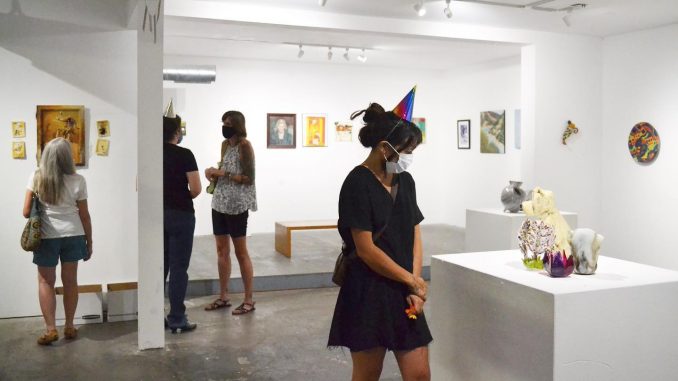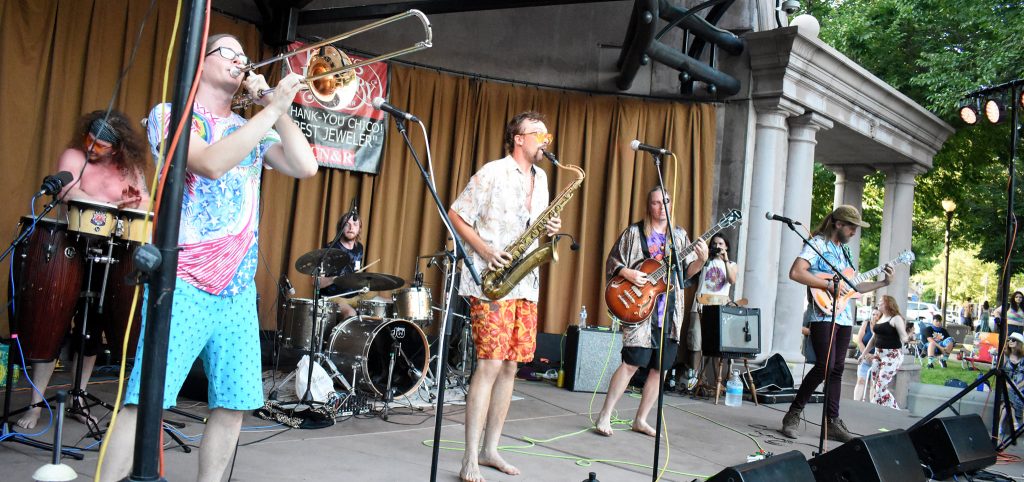
This feature is part of the Chico News & Review’s 2022 Arts & Music special issue.
Arts have long been entwined with the identity of Chico—theaters, museums, troupes, musicians, artists and patrons weaving a rich cultural fabric. Yet, apart from reports on economic impacts and occasional outside acclaim, such as ranking among the top 10 arts towns in a 2002 book, the city tends to lack holistic perspectives on this slice of life.
That inspired Stephen Cummins to spearhead Creative City Chico. As both a city arts commissioner and executive director for University Public Engagement (UPE) at Chico State, overseeing Chico Performances among other programs, he has a broad view of the local scene. He approached Chico State President Gayle Hutchinson with the idea of arts and cultural planning for Chico; supported by City Hall and the commission, as well, UPE has gathered input and collected data the past two years.
Along with a draft report just about ready for review, UPE will conduct a series of community roundtables starting April 21 to expand upon the findings (see infobox). The mid-April launch coincides with California Arts, Culture and Creativity Month. The ultimate goal: conclusions and recommendations for advancing the arts—for whichever individuals or entities seize upon them.
“It’s been very interesting and telling,” Cummins said of the work so far. “Clearly, our arts community is very different today than two years ago when we first had these conversations. The pandemic, just like the Great Recession and other big events throughout the course of American history, has upended our arts organizations, arts education, cultural institutions, just like [it’s] upended everybody else’s life.
“There’s great opportunity here,” he added. “It’s really exciting. We learned a lot.”
UPE based its process on a cultural planning toolkit, by Creative City Networks of Canada and Arts Now, for the province of British Columbia. The first step was assembling (via Zoom due to COVID) 50 members of the arts community for six roundtable discussions on the state of the arts in Chico. They hit on some common themes, such as a need for accessible, affordable facilities and ensuring platforms for all voices.

In autumn 2020, UPE surveyed arts organizations about their operations and received 95 responses. That information accompanies data sets acquired from DataArts, an analytics project based at Southern Methodist University on Chico and comparable communities.
“Everybody knows they do The Nutcracker every year at Chico Community Ballet or [about] Chico Performances because they have a lot of money invested in marketing,” Cummins said, “but there’s a lot going on in Chico that many people may not know about.
“One of the things that popped up in the data [is] not a lot of people finding full-time employment in the arts, especially with our arts organizations. Many of our arts organizations are operated with one, maybe two paid positions and a lot of volunteer and sweat equity provided by good people who care.”
Big picture
DataArts annually ranks 947 communities nationwide (metro and micro areas) on “arts vibrancy” based on empirical data from sources such as the U.S. Census Bureau and National Endowment for the Arts. Primary metrics are the amount of arts providers, arts spending and government support. Crunching the numbers, DataArts indexes on a 1-100 scale and ranks first to 947th.
Chico’s overall arts vibrancy index is 50.6, placing 468th.
“We’re right there in the middle,” Cummins said. “That’s not bad.”
But how could Chico do better?
That’s the next step. DataArts provided detailed statistics not only of Chico but also a dozen other college towns across the country. UPE chose to conduct a “deep dive” beyond the numbers on four: Ashland-Medford, Ore.; Columbia, Mo.; Modesto; and Truckee-Grass Valley.
Comparisons may prove instructive.
“Our DCBA [Downtown Chico Business Association] has been a leader in promoting downtown Chico and doing it through gathering people together at cultural events—Thursday Night Market, Friday Night Concerts, all these things they do,” Cummins said. “I look at the same thing happening in Modesto. Their Downtown Modesto Partnership branded it as ‘Do Mo’; it’s almost a cultural district. It’s not recognized as the California Arts Council as a cultural district, but that’s what it is.

“I look at that, and I look at what the DCBA [is doing], and we’re not too far off here. We might even be ahead of them in many ways, I don’t know.
“But those are the kinds of questions we need to ask so we don’t just sit in our silo—like some people do, keep beating their head against the same wall and going, ‘Why aren’t things changing?’—rather than look at data and look at comparison communities and say, ‘Let’s be the change.’”
For the final discussion groups, UPE plans to widen the scope beyond people connected to the arts and incorporate the community at large. After that, the final report will go to the city, university and public.
“Our job in this process is to present it,” Cummins said, “and hopefully get enough people engaged in the conversation from all different walks—whether those be politicians or artists or business owners—because I think everybody for whatever reason … can get behind this.”
Get involved:
Visit chicoperformances.com/creative-city-chico.php for details about community roundtables starting April 21.

Be the first to comment